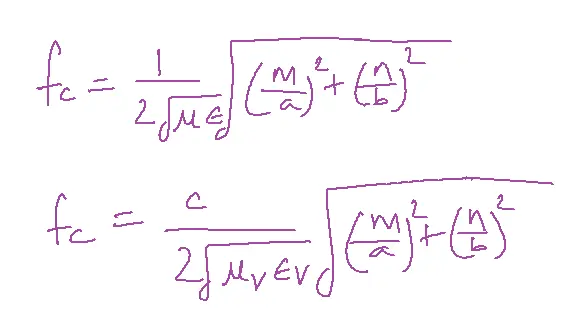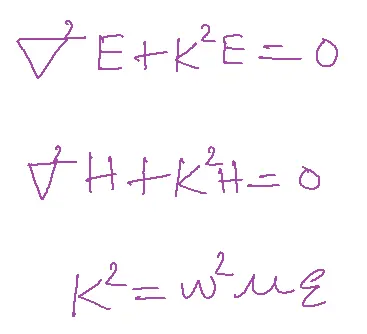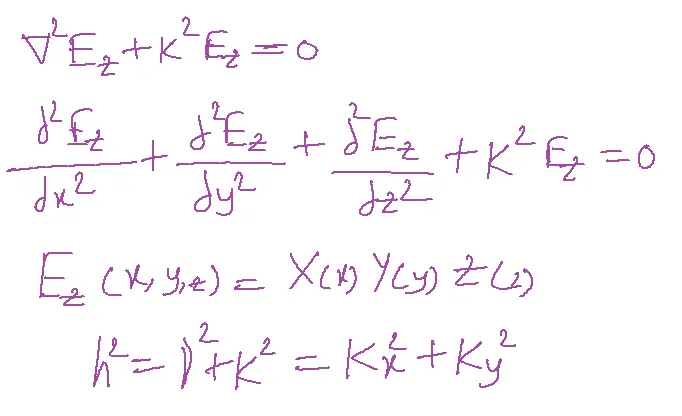In microwave engineering, a rectangular waveguide is a type of transmission line used to guide electromagnetic waves with frequencies in the microwave range (approximately 300 MHz to 300 GHz).
It consists of a hollow, rectangular-shaped conductor with a flat bottom and four sides, typically made of metal.
Table of Contents
Key characteristics:
1. Operating frequency range: Microwave frequencies (300 MHz to 300 GHz)
2. Cross-sectional shape: Rectangular
3. Conductor material: Typically metal (e.g., copper, aluminum)
4. Electromagnetic wave propagation: Transverse Electric (TE) and Transverse Magnetic (TM) modes
Advantages:
1. High power handling capability
2. Low loss and high efficiency
3. Ability to support multiple propagation modes
4. Easy to manufacture and integrate with other components
Disadvantages:
1. Limited bandwidth
2. Large size and weight compared to other transmission lines
3. Sensitive to manufacturing tolerances and imperfections
Rectangular waveguides play a crucial role in microwave engineering, enabling efficient transmission and manipulation of microwave signals in various applications.
Due to radiation leakage and conductor resistance, the loss of electromagnetic waves traveling via transmission lines increases significantly at high frequencies. Hollow rectangular waveguides can be used to solve the issue.

- Examining a rectangular waveguide with internal dimensions of a×b will help.
Both TE and TM modes can be transmitted through a waveguide. - The electric field in TE Modes is perpendicular to the direction of propagation.
- TEmn, where m is the number of half-wave changes in the X-direction of the field.
- The number of half-wave fluctuations of the field in the Y-direction is represented by n.
- The transverse magnetic field and the electric field component in TM Modes are oriented in the dire Examining a rectangular waveguide with internal dimensions of a×b will help
- Both TE and TM modes can be transmitted through a waveguide.
- The electric field in TE Modes is perpendicular to the direction of propagation.
- TEmn, where m is the number of half-wave changes in the X-direction of the field.
- The number of half-wave fluctuations of the field in the Y-direction is represented by n.
- The transverse magnetic field and the electric field component in TM Modes are oriented in the direction of propagation.
A certain mode is only compatible with frequencies higher than its cutoff. The cutoff frequency is provided by

Finding the EM wave’s field components inside the waveguide is necessary.
Ex, Ey, Ez
Hx, Hy, Hz
A waveguide with perfect conductor walls and a lossless dielectric cannot propagate TEM waves.
Helmholtz Equations should be followed by the wave inside.

Rectangular waveguide fields are divided into two categories.
Longitudinal Field Components (Ez, Hz)
Tangential Field Components (Ex, Ey, Hx, Hy)

Applications:
- Radar Systems: Rectangular waveguides efficiently transmit microwave signals in radar systems, enabling long-range and high-resolution detection.
- Satellite Communication: In satellite communication, waveguides channel microwave signals between ground stations and orbiting satellites, enabling the transmission of diverse data.
- Microwave Ovens: Rectangular waveguides in microwave ovens guide microwaves for efficient energy transfer and uniform heating.
- Particle Accelerators: Waveguides in particle accelerators guide and control electromagnetic fields, facilitating scientific research and medical applications.
- Microwave Test Equipment: Rectangular waveguides serve as transmission lines and components in microwave test equipment.
Related FAQs
1. What is a rectangular waveguide?
- A rectangular waveguide is a hollow metallic tube with a rectangular cross-section used to transmit electromagnetic waves, primarily in the microwave frequency range.
2. Why are rectangular waveguides used in microwave engineering?
- Rectangular waveguides offer low signal loss, high power handling capabilities, and support a wide bandwidth, making them ideal for microwave communication, radar systems, and other high-frequency applications.
3. What are the different modes of propagation in a rectangular waveguide?
- Rectangular waveguides support Transverse Electric (TE) and Transverse Magnetic (TM) modes.
- TE modes have no electric field component in the direction of propagation, while TM modes have no magnetic field component.
4. What is the cutoff frequency of a rectangular waveguide?
- The cutoff frequency is the minimum frequency at which a particular mode can propagate through the waveguide.
- Below the cutoff frequency, the wave is attenuated and cannot travel efficiently.
5. What are the advantages of rectangular waveguides over other transmission lines?
- Lower signal loss compared to coaxial cables at high frequencies.
- They can accommodate greater power transmission compared to coaxial cables.
- Better mode control and reduced interference.
- Commonly found in applications such as microwave communication and radar systems.
